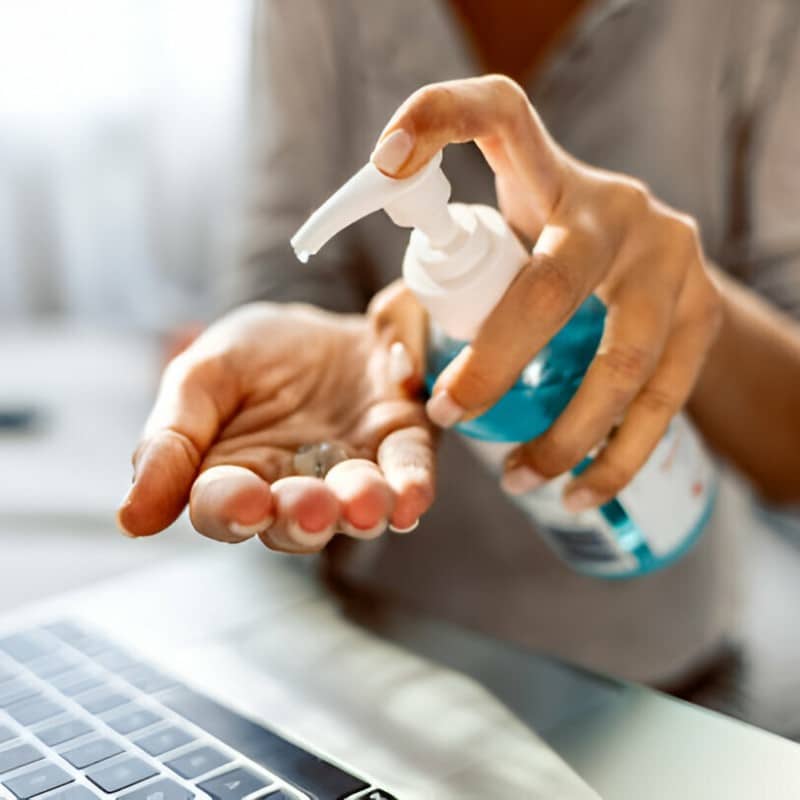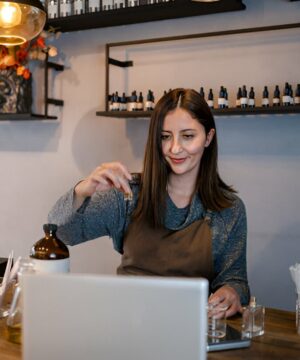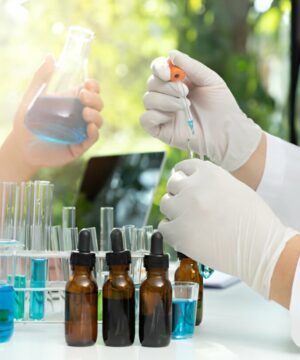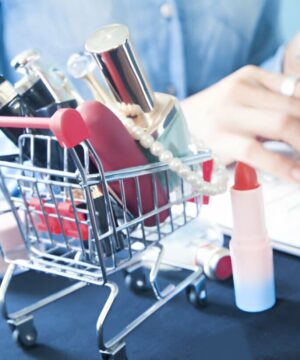A liquid soap safety assessment is a detailed safety assessment of a liquid soap product. This assessment is conducted to ensure the safety of a liquid soap product before it is placed on the market. A qualified safety assessor performs this assessment based on the product dossier containing all required information and documentation on the soap provided by the manufacturer. This file is called a Cosmetic Product Information File (PIF).
What is a Cosmetic Product Information File (PIF) for liquid soap?
The Cosmetic Product Information File (PIF) is a comprehensive collection of documentation required for any liquid soap. The PIF can be divided into three sections:
Part I: Identification of manufacturer, responsible person, production site
Contains information about the manufacturer and production site, including GMP certification.
Part II: Information about the liquid soap product
Contains liquid soap information including composition, raw material documentation, finished product specifications, test results, labeling and packaging.
- The composition of liquid soap
- Production method
- Product identification (lot or batch no./barcode no./production code etc.).
- Documentation of the raw materials used in the liquid soap (TDS, MSDS, CoA, etc.)
- Specifications of the finished product (this includes physical (such as appearance, color, texture, and odor), chemical (concentration of active ingredients, pH, viscosity, density, etc.), and microbiological (limits for bacteria, fungi, and other microorganisms) characteristics) (TDS, CoA, MSDS)
- Laboratory test results (shelf life and compatibility test)
- Packaging Specifications
- Labeling
- Claims
- If there is an undesirable effect / serious undesirable effect, the relevant documents
Part III: Cosmetic product safety report (CPSR) for liquid soap
The CPSR consists of two main parts: Part A and Part B.
Part A – Liquid Soap Safety Information: Summarizes all PIF elements listed above and provides product information.
Part B – Cosmetic Product Safety Assessment: Contains the safety assessor’s conclusions, warnings and justifications that ensure the product is safe under normal use.
- In-depth formula analysis
- Analysis of the composition of your liquid soap, including active ingredients, fragrances and preservatives.
- Assessment of the concentration of each ingredient to ensure it is within safe limits.
- Checking ingredients
- Check that all ingredients are permitted according to the Cosmetics Regulation (EC) No. 1223/2009.
- Control of source and purity of raw materials.
- Odor Analysis (IFRA) Evaluation of odors according to IFRA standards and the latest allergen regulations.
- Analysis of laboratory test results
- All necessary analysis and documentation to demonstrate the safety of the product.
- Toxicological evaluation
- Assessment of toxicological profiles of the substances used in the liquid soap.
- Risk assessment and hazard identification
- Assessment of potential risks based on the proposed application and target population (e.g., baby soap or soap for sensitive skin).
What products can be assessed with this liquid soap safety assessment?
This assessment is intended for liquid soap requiring 3 laboratory tests.
| Product group | PIF | CPSR | Microbiological Test | Challenge Test | Stability test |
|---|---|---|---|---|---|
| Hand soap | ✅ | ✅ | ✅ | ✅ | ✅ |
| Shower Gel / Body Wash | ✅ | ✅ | ✅ | ✅ | ✅ |
| Facial cleanser | ✅ | ✅ | ✅ | ✅ | ✅ |
| Liquid Shampoo | ✅ | ✅ | ✅ | ✅ | ✅ |
| Baby Soap / Baby Shampoo | ✅ | ✅ | ✅ | ✅ | ✅ |
| Dishwashing soap (for hand) | ✅ | ✅ | ✅ | ✅ | ✅ |
| Pet soap | ✅ | ✅ | ✅ | ✅ | ✅ |
| Antibacterial Soap | ✅ | ✅ | ✅ | ✅ | ✅ |
| Liquid Shaving Soap | ✅ | ✅ | ✅ | ✅ | ✅ |
| Body Scrub (with water phase) | ✅ | ✅ | ✅ | ✅ | ✅ |
| Cleansing gel (water-based) | ✅ | ✅ | ✅ | ✅ | ✅ |
| Liquid soap with natural extracts | ✅ | ✅ | ✅ | ✅ | ✅ |
| Liquid soap without preservation | ✅ | ✅ | ✅ | ✅ | ✅ |
This table is indicative. If your product is not listed or if you are not sure, you can always ask us. An additional laboratory test can also be ordered during the safety review.
Liquid soap contains water and is susceptible to microbial growth, requiring both a microbiological test and a challenge test. Low pH results in microbial risk. You can measure this with a digital pH meter or pH test strips.
The stability test is essential to verify that the soap retains its properties during shelf life.
When are liquid soap require other tests?
Other tests such as microbiological tests or challenge tests are required with the liquid soap when:
- Has a low pH (below pH 10).
- Contains extra water (for example, in liquid soap).
- Contains ingredients susceptible to microbial contamination (such as milk or fresh plant extracts).
What laboratory tests are required?
For a cosmetic safety assessment for liquid soap, the following laboratory tests are essential to comply with European regulations and ensure the safety of the product:
1. Stability test
- Purpose: Determines whether the liquid soap remains stable under normal and extreme conditions, such as heat, cold and exposure to light. This involves checking changes in texture, color, odor and action.
- Important for: Ensuring the shelf life and safety of the liquid soap over its lifetime.
- How is this tested: Storage of liquid soap at different temperatures for a specified time.
2. Microbiological Test
- Purpose: Checks the microbiological quality of the product. It identifies possible contamination by bacteria, yeasts or fungi that may be harmful to the user.
- Important for: Water-based products or products prone to bacterial growth.
- How is this tested: Aerobic bacterial counts, fungal and yeast analyses.
3. Challenge Test (Preservative Efficacy Test).
- Purpose: Test the effectiveness of preservatives in the product. This is to prevent microorganisms from multiplying during the period of use.
- Important for: Products that have an extended shelf life or are in repeatedly opened containers.
- How is this tested: Simulation of different use scenarios to evaluate the effect of preservatives.
How does the process work?
- Choosing Assessment
- You purchase the assessment through our website.
- Access to secure Portal
- After purchase, you will gain access to our secure portal where you can complete the intake.
- Complete Intake
- Complete all requested information about your product and upload relevant documentation.
- Send Samples
- Send physical samples of your product to our laboratory. We will tell you exactly what we need for this. The samples can be sent to us free of charge.
- Laboratory tests
- We perform stability test and compatibility test.
- Safety Assessment
- Our safety reviewer prepares the PIF, Part I, II and III.
- EU CPNP notification and documentation delivery
- We will take care of the registration of your product in the Cosmetic Products Notification Portal (CPNP) and you will receive the complete PIF documentation from us.
What do you need to apply for a CPSR?
To make the process go smoothly, we need the following information from you:
- Product Formulation: A complete list of ingredients, including concentrations and INCI names.
- Product packaging: Information on packaging and labels.
- Instructions for use: How the product is used by consumers.
- Sample: A physical sample of your product for laboratory analysis.
- Documentation: Certificates of raw materials (e.g., MSDS and COA).
For whom is this service intended?
Our liquid soap safety assessment is specially designed for:
- Liquid soap producers who want to sell their products in the EU.
- Small business owners offering handmade liquid soap.
- Large companies looking to launch a wide range of liquid soaps.
- DIY makers who want to professionalize their creations.
Why to choose our safety assessment for liquid soap choose?
- Experienced Safety Assessors: Our safety assessments are conducted by certified professionals with years of experience in the cosmetics industry.
- Quick Turnaround Time: We deliver the CPSR within 10 to 15 business days of receiving all required data.
- Clear Communication: No jargon, but clear explanations throughout the process.
- Customized Recommendations: We provide practical recommendations if your product needs customization.
- Fully Compliance-Focused: Our reports are 100% compliant with European regulatory requirements.
Frequently Asked Questions
- How long is a CPSR valid? A CPSR remains valid as long as the product formulation and other relevant aspects remain unchanged.
- Can I make changes to my product after the CPSR? Yes, but then the CPSR must be revised to ensure that the changes do not affect safety.
- Are there any products that do not require CPSR? No, all liquid soaps sold within the EU must have a CPSR.
- How do I know if my ingredients are allowed? We help you do this by checking all ingredients based on the latest regulations.
- Can I use ingredients from suppliers other than YouWish? Yes, that’s no problem at all. As long as you have documentation, we can make a safety assessment for you,








Reviews
There are no reviews yet.